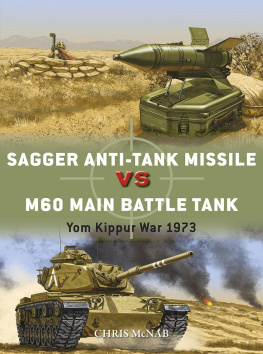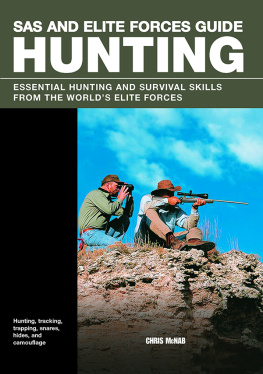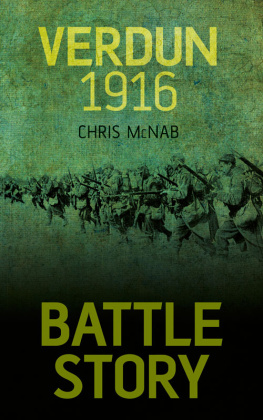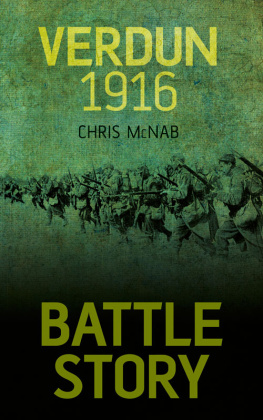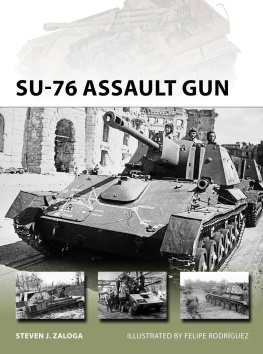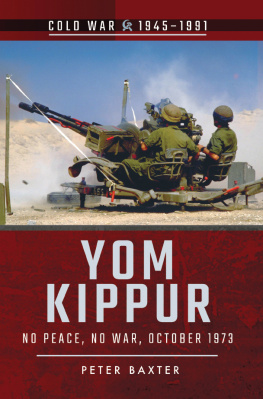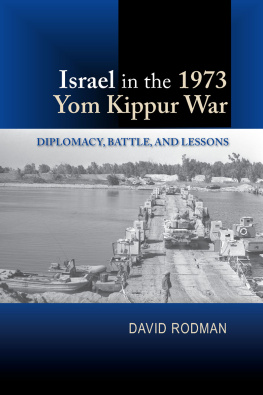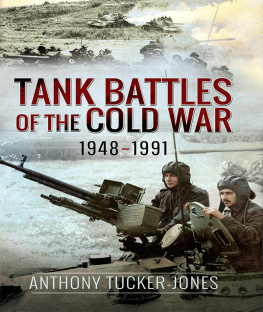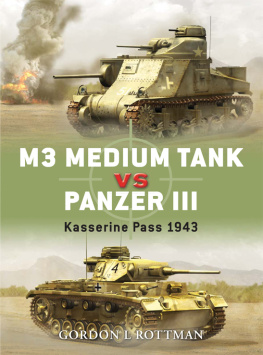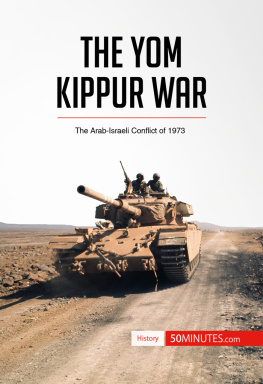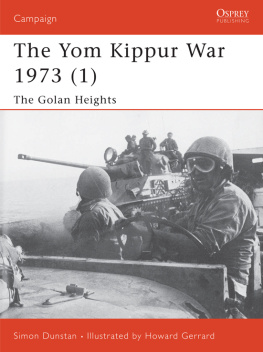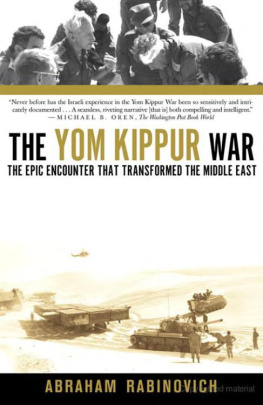INTRODUCTION
The Yom Kippur War of 1973, also known as the October War, sits at a special juncture in Cold War history. From the perspective of our current age that, at least at the time of writing, is doctrinally dominated by light mobile warfare (counter-insurgency, rapid deployment, asymmetric warfare, etc.), it is easy to forget the rather different priorities of conventional warfare in the 1960s and 1970s. The strategic and tactical thinking on both sides of the Iron Curtain was largely focused on the delivery of nuclear weapons and, on the ground, the movement of armoured forces. This was the age of the tank. The main battle tank (MBT), fighting in volume, was regarded as the metal fist of offensive warfare. In war colleges and training grounds around the world, military commanders spent much of their time thinking about how to use armour both to defeat the other sides tanks in open battle, and how to drive deep into enemy territory with armoured elements.
This was as true in the cauldron of the Middle East as in Central Europe. Since the establishment of the State of Israel in May 1948, and the new nations immediate descent into conflict with its Arab neighbours, the Middle East had become a virtual test bed for the tactics and technologies of the Cold War. The open ground that characterized many of the battlefields, especially in the Sinai Desert, meant that tank-vs-tank combat was common and critical to the outcome of the clash. Israel and its chief opponents Egypt, Syria, Jordan, Iraq, Saudi Arabia and Iran therefore sank huge financial investment into purchasing armour in both quantity and quality. Israel typically went to the United States and the United Kingdom for its armour (and also utilized plentiful volumes of captured Arab kit), while the Arab nations shopped principally in the Eastern Bloc.

An AT-3 Sagger anti-tank guided missile (ATGM) in its classic suitcase configuration. Note the red-tipped flare mounted between the two fins angled towards the viewer. This flare would ignite when the missile was launched, providing a visual tracking aid for the operator throughout the entire period of flight. (AirSeaLand Photos/Cody Images/MoserB)
Yet in the Yom Kippur War, a new and shocking weapon disrupted the tactical picture of armoured warfare and resulted in what military historian Abraham Rabinovich has called the humbling of the tank (Rabinovich 2004: 107). This was the deployment in mass of the early generations of anti-tank guided weapons (ATGWs), or anti-tank guided missiles (ATGMs), most prominently in the form of the 9M14 Malyutka, better known in the West by its NATO (North Atlantic Treaty Organization) codename, AT-3 Sagger. Rather like the disruption caused by the introduction of hand-held firearms in the medieval period, whereby an ill-trained footsoldier gained the personal firepower to unseat and kill a powerful knight, the two- or three-man Arab Sagger teams had the capability of killing any Israeli MBT. Anti-tank weapons were nothing new World War II had seen plenty of tank-killing devices but the introduction of Sagger batteries en masse, each missile able to destroy a tank out to a range of 3km, changed the nature of manoeuvre warfare in the Middle East.
If there is any doubt about the tactical shock unleashed by the advent of the Sagger missile and its ilk, just consider the 1975 report from the US Armys Training and Doctrine Command (TRADOC), entitled Soviet ATGMs: Capabilities and Countermeasures. The meat of the report is largely a sober analysis of the Yom Kippur War. Here the writers reflect upon how the world of armour had been changed by the conflict:
All the modern armies of NATO, the Warsaw Pact, the Arab and Israeli nations generally agree that the main offensive weapon of ground forces is the tank. With its heavy armament, armor protection, and cross-country mobility, only the tank can break through an enemy force and engage or defeat it decisively. While the Arab-Israeli War of October 1973 (The Yom Kippur War) reaffirmed the offensive potential of the tank, it has also dramatized the lethality of modern antitank weapons particularly the high velocity tank cannon and the long-range antitank guided missile (ATGM). The effect of these modern antitank weapons in this war was devastating. Not since the Battle of Kursk between the Germans and Russians in World War II has there been a comparable loss of tanks in such a short period of time. If the rate of loss which occurred in the Yom Kippur War during the short 20 days of battle were extrapolated to the European battlefields over a period of 6090 days, the resulting losses would reach levels for which the United States Army is totally unprepared. While it is impossible to say precisely how many losses were attributable to a certain weapons system, we can say, particularly in view of the vast numbers of ATGMs employed, that the antitank guided missile was responsible for a high percentage of the Israeli tank losses at the beginning of that war. (US TRADOC 1975: 3)
There is almost a breathlessness in this writing, as if the authors are staring at the immense pile of doctrinal documents that need to be rewritten in light of the Saggers influence. Furthermore, the Israelis were heavily reliant on US kit, not least the latest vehicle in their armoured inventory, the M60 and M60A1 Patton MBTs, known in Israeli service as the Magach 6 and Magach 6A respectively. This book filters out the many threads of the Yom Kippur War to focus on the clash between these two contrasting opponents. On the one hand, the M60/M60A1 tank with its heavy armour, powerful engine and far-reaching, accurate 105mm main gun. On the other, principally Egyptian Sagger ATGW teams, frail human beings made more powerful by a new and mobile anti-tank technology. What we shall see in this clash is the age-old battle between offence and defence, measure and countermeasure. We shall also see how the capabilities of individual weapons are not purely governed by their own intrinsic performance, but also by the tactical competency of the forces in which they serve. For while the Sagger missile might have brought about the humbling of the tank, such a reverse was only partial.
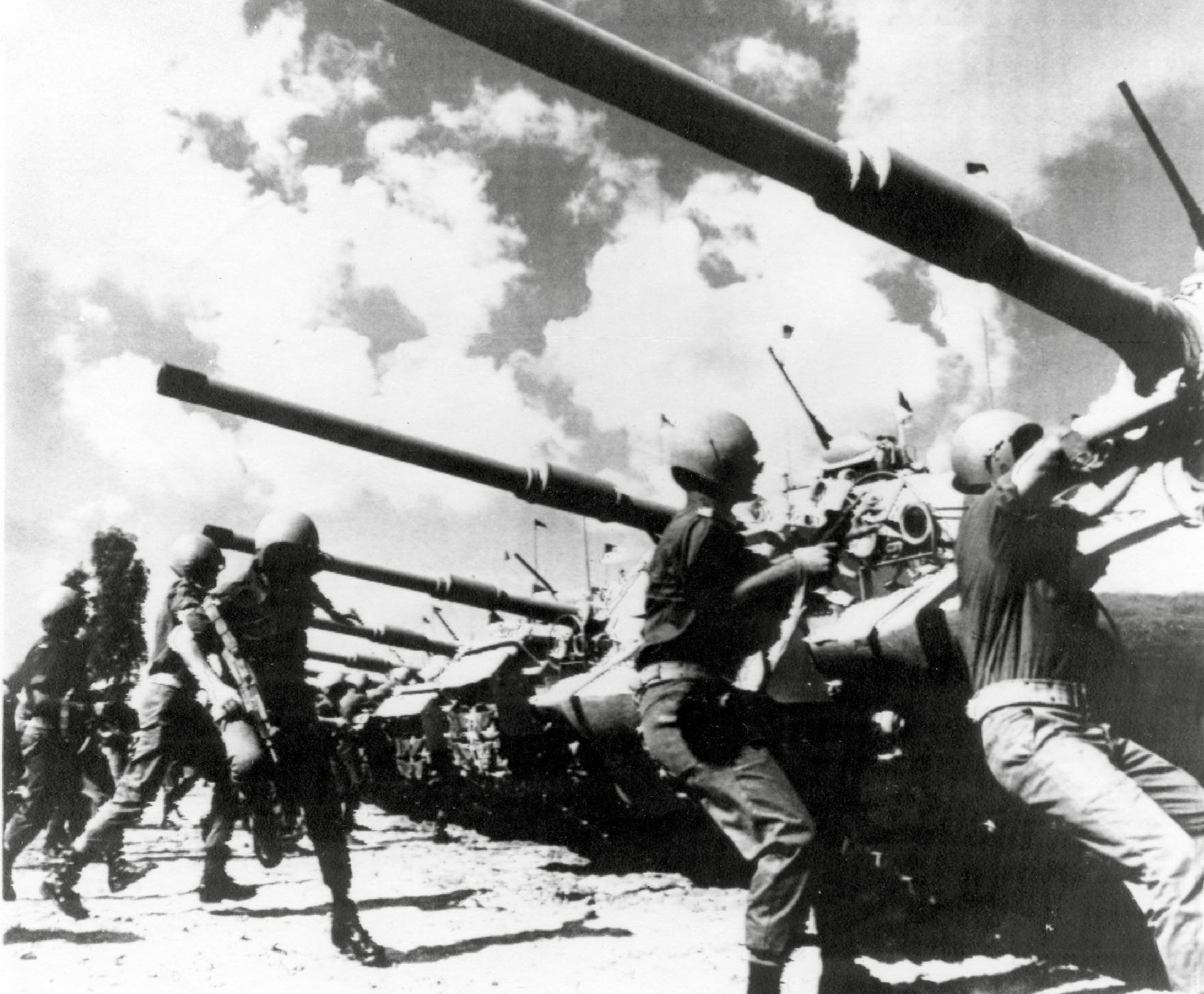
Israel Defense Forces (IDF) tank crews race to their M60 tanks during an exercise in the early 1970s. Note how some of the men carry the 9mm Uzi submachine gun; this was a popular weapon for tankers, as the compact firearm could be easily stowed inside an already crowded fighting compartment. (AirSeaLand Photos/Cody Images)
CHRONOLOGY
1961
July
Development of the 9M14 Malyutka (AT-3 Sagger) begins.
1963
16 September
The 9M14 Malyutka is accepted for Soviet service, and soon begins selling to export clients.
1967
510 June
Israel wins a stunning victory in the Six-Day War.
15 June
The War of Attrition begins, with fighting around the Suez Canal Zone and the Bar-Lev Line until 1970.
1971
Some 150 M60A1s are purchased by Israel. Israel makes subsequent purchases of M60s prior to the outbreak of war.
Sagger ATGWs are purchased by Egypt and other Arab forces.
May
Egyptian armed forces under President Anwar Sadat begin preparing for war against Israel.
1973

